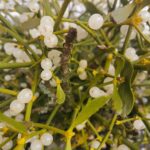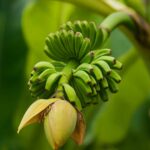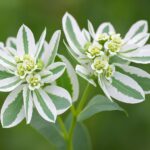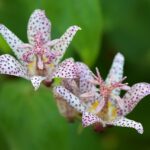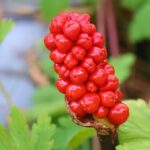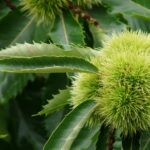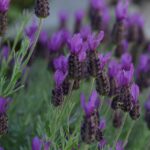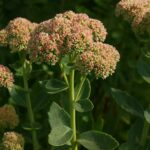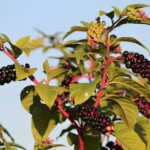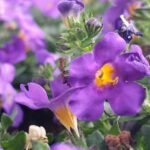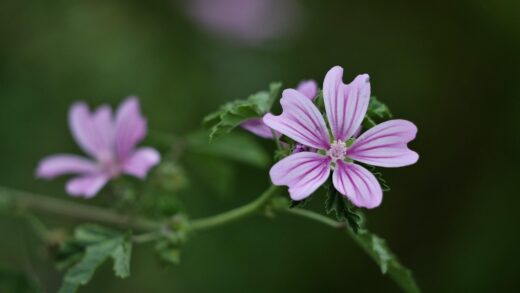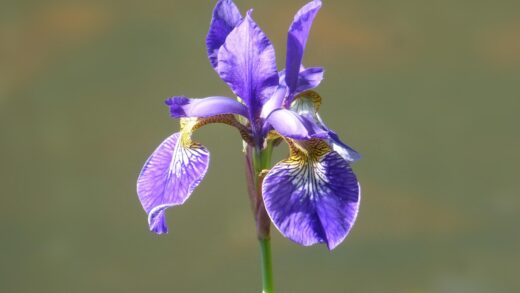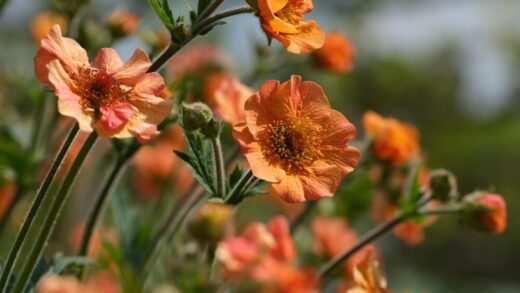The hosta, also known as plantain lily, brings life to the shadier parts of the garden and is one of the most beloved perennials in the foliage plant category. Its popularity is not only due to its decorative leaves of various sizes, shapes, and colors, but also to its relatively low maintenance requirements. However, for the plant to truly become the jewel of the garden, knowledge of the correct planting and propagation techniques is essential. Proper planting lays the foundation for the plant’s long-term health and vitality, while correct propagation methods allow us to easily increase our stock and populate new areas with this versatile plant. In the following, we will detail the key steps and professional tricks that guarantee the successful cultivation of hostas.
Hostas are extremely rewarding plants that, under the right conditions, can adorn our garden for decades. The diversity of their leaves is astonishing: the spectrum ranges from blue-green to chartreuse to variegated varieties with white or cream-colored edges. It is important to note that the leaf color and pattern of different cultivars may indicate different light requirements, which must be given special attention during planting. The bell-shaped white or purple flowers that appear in the summer, although less prominent than the foliage, add further ornamental value and attract pollinators. To maintain the overall health of the plant and increase its resistance to diseases, prevention and proper care are crucial.
In gardening, we often face the challenge of finding a suitable plant for shady or semi-shady areas that thrives and is also decorative. The hosta offers a perfect solution to this problem, as it develops most beautifully in these very places where other, sun-loving plants would not survive. They look particularly good under trees and shrubs, on the north side of buildings, or even as edging for flower beds. The density of their foliage effectively inhibits weed growth, making them excellent as ground cover. By selecting and combining the right varieties, we can enrich the shady corners of the garden with a sea of leaves of varied textures and colors that lasts all season long.
One of the most important secrets to success in hosta care is consistency and paying attention to the plant’s signals. Although the plant is fundamentally undemanding, prolonged drought, excessive sunlight, or nutrient-poor soil all leave their mark on the leaves and hinder its development. A healthy, well-developed hosta clump is also more resistant to pests such as snails and slugs, which are its greatest enemies. Regular but not excessive watering, mulching the soil, and occasional nutrient supplementation all contribute to our plants growing stronger and more spectacularly year after year. Proper care not only ensures the beauty of the plant but also lays the foundation for successful propagation.
The ideal planting location and soil preparation
Choosing the most suitable location for a hosta is crucial for the plant’s long-term health. Most varieties prefer filtered light or morning sun followed by afternoon shade. Too much direct sunlight, especially during the midday hours, can scorch the leaves, resulting in brown, dry spots and a general decline of the plant. It’s important to know that varieties with lighter, yellowish or cream-colored leaves generally tolerate a bit more light, and in fact, need it to maintain the intensity of their color, while the dark green and blue-leaved varieties feel best in deeper shade. Therefore, when choosing a planting location, we should always consider the specific light requirements of the given variety.
More articles on this topic
The quality of the soil is at least as decisive as the light conditions. Hostas prefer well-draining soil that is rich in humus and nutrients, with a slightly acidic to neutral pH (6.5-7.5). Before planting, it is essential to thoroughly prepare the soil, which includes loosening the area to a depth of at least 30-40 cm and improving the soil’s structure and nutrient content. To do this, mix plenty of well-rotted compost, manure, or high-quality potting soil into the excavated earth, which not only provides the necessary nutrients but also improves water retention. Heavy, clay soils can be made looser by adding sand or perlite, while overly sandy soils can be made more suitable for hostas by enriching them with organic matter.
The size of the planting hole is also an important factor that influences the proper development of the root system. As a general rule, the hole should be at least twice as wide and one and a half times as deep as the size of the plant’s container or the root ball of a bare-root plant. This spacious area ensures that the roots can easily spread out in their new location and do not encounter obstacles. A layer of compost or slow-release organic fertilizer can be placed at the bottom of the hole, covered with a thin layer of soil so that the roots do not come into direct contact with the concentrated nutrients. This method functions as a kind of nutrient reservoir that supplies the plant in the later stages of growth.
When planting, carefully remove the plant from its container and loosen the compacted edges of the root ball to encourage new root growth. Place the plant in the center of the hole so that the crown, the point where the stems and roots meet, is level with the soil surface. Planting too deep can lead to root rot, while planting too high can dry out the roots. After setting the correct depth, backfill the hole with the amended soil, gently firm it around the plant to eliminate air pockets, and then water it thoroughly. Ample watering after planting is crucial for establishment and helps the soil settle around the roots.
The basics of professional care and maintenance
The most critical element of hosta care is ensuring adequate water supply, especially during the growing season from spring to autumn. Although the plant prefers moist soil, standing water and overwatering can lead to root rot, which causes the plant to perish. The best strategy is to regularly check the soil’s moisture content and water when the top few centimeters of soil begin to dry out. Watering should preferably be done in the early morning hours, directing the water directly to the base of the plant to avoid unnecessarily wetting the leaves, which promotes fungal diseases. During hot, dry summer periods, more frequent watering may be necessary, especially for plants grown in containers.
More articles on this topic
Nutrient supplementation also contributes to the development of lush, healthy foliage. At the beginning of the season, in spring, when the shoots appear, it is advisable to apply a balanced, slow-release granular fertilizer around the plant or enrich the soil with well-rotted compost. Excessive nitrogen supplementation should be avoided because, although it may result in spectacular leaf growth, it makes the plant’s tissue weak and more susceptible to diseases and pests. Do not apply fertilizer after mid-summer to allow the plant time to prepare for the winter dormant period. Proper nutrition also helps maintain the color intensity and contrast of variegated varieties.
Mulching is an extremely useful horticultural technique for hostas. A 5-7 cm thick layer of organic mulch, such as pine bark, composted leaves, or shredded branches, spread around the base of the plant has several benefits. Mulch helps to retain soil moisture, thus reducing the frequency of watering, prevents weed growth, and keeps the soil cool during the summer heat. As the organic mulch slowly decomposes, it enriches the soil with valuable nutrients, improving its structure. It is important not to pile mulch directly against the plant’s stem, as this can promote rot; leave a small open area around the stems for proper air circulation.
Pest and disease control is also part of the care routine. The most common pests of hostas are snails and slugs, which chew irregular holes in the leaves. They can be effectively controlled by setting up environmentally friendly snail traps or using special, iron phosphate-based baits. Diseases attack healthy plants less frequently, but unfavorable conditions, such as excessive moisture, can promote fungal infections like leaf spot or root rot. Regular removal of dead, damaged, or diseased leaves, as well as maintaining proper spacing for good air circulation, all contribute to prevention.
Effective methods of propagation
The most common and reliable method of propagating hostas is by division. This vegetative propagation method not only allows for the creation of new plants but is also occasionally necessary to rejuvenate overly dense, old clumps whose centers may be starting to die out. The ideal time for division is in early spring, when the buds, or “eyes,” have just emerged from the ground, or in early autumn, at least six weeks before the first frost, to give the plant time to establish its roots. The advantage of autumn division is that the soil is still warm, which stimulates root formation, while after spring division, the plant can immediately start vigorous growth.
The process of division is relatively simple but requires care. First, carefully lift the entire mother plant out of the ground using a garden fork, making sure to damage the root system as little as possible. Once lifted, shake or wash off the excess soil from the roots to make the individual growing points and the root structure clearly visible. Using a sharp, sterilized knife, spade, or even two forks, separate the clump into smaller units. Each new piece should have at least one, but ideally several buds (eyes) and a well-developed root system attached to it.
Plant the newly obtained plants in the previously described manner, in a suitable location and prepared soil. It is important to water the new plants thoroughly after division and to pay special attention to regular watering for the first few weeks until they become established and rooted in their new location. In the first year after division, the plants may grow more slowly and their foliage may not reach full size, as they devote most of their energy to developing their root system. However, from the following season, you can expect vigorous growth, and the plants will display their full splendor.
Although division is the most common method, hostas can also be propagated from seed, but this is a much more lengthy and less predictable process. Seed-grown plants generally do not inherit the varietal characteristics of the mother plant, especially in the case of variegated hybrids, so the result is often a simple, green-leaved individual. Sow the seeds indoors in spring in high-quality seedling mix, covering the seeds only thinly with soil. Germination requires a bright location and consistent moisture. The small seedlings develop slowly, and it can take several years for them to reach a suitable size for planting out and to develop their final, mature form. This method is recommended more for adventurous gardeners and plant breeders.



